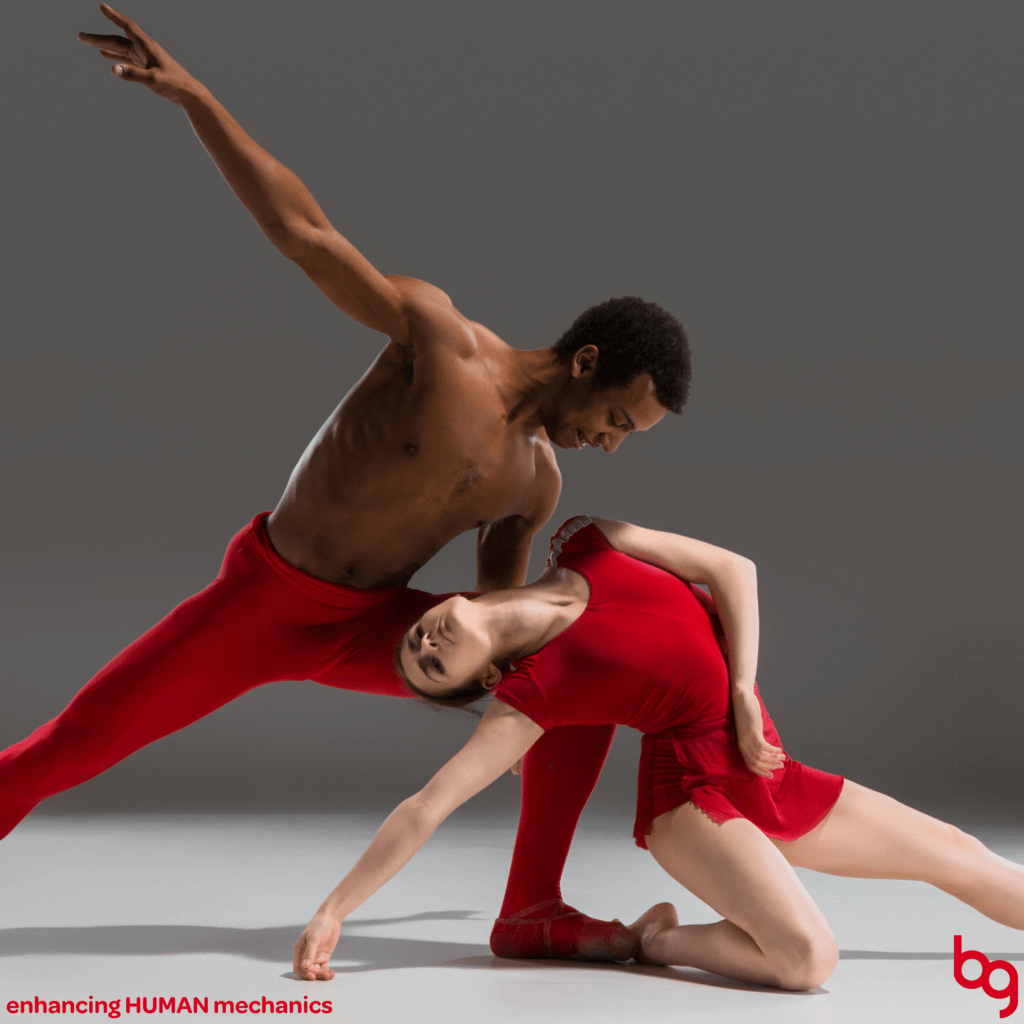Dancing is your passion. We get it. But we also know that within the exquisite world of dance is an environment of tough competition. So you have to function at your absolute best, every single day, whether you’re performing on stage at opening night or strutting your stuff at an open audition. We want to address the 2 biggest mistakes dancers make and how to avoid them!
Stretching BEFORE class or rehearsal
Dancers need to maintain their high level of flexibility and need to spend time stretching on a daily basis. It is common to walk into the studio and see dancers stretching passively in the splits, low lunges, and generally “rolling out” on the floor with foam rollers and tennis balls.
Unfortunately, this is not the best way to get ready for a day full of rehearsals. Stretching has consistently been shown to be much more effective when muscles are warm, as talked about in our previous blog “Stretching Tips for Dancers.” This means that stretching AFTER class and rehearsal have longer lasting effects. While it might feel good to ease into a dance day with passive stretching on the floor and wake up for the day the best way to get ready for a dance day is strengthening….which leads me to the next mistake!
Lack of Strength Training
Dancers tend to shy away from strength training or cross-training due to long days in the studio and fatigue. Most dancers tend to think that they are getting enough strengthening from their daily technique class. This can lead to imbalances due to the nature of classical dance technique. However, as a dancer, it is vitally important to work on improving muscle strength and correcting imbalances outside of class. Often, a ballet or modern dance technique class does not provide enough muscle loading and appropriate balanced muscle work to optimize overall physical performance.
A professional dancer’s career is short and technique class is meant to REFINE technique and be a warm-up for rehearsal. That means that strength building needs attention outside of class time. Core exercises focused on strengthening should be performed BEFORE class or rehearsal. This allows the muscles get “turned on.” The muscles are able to work more efficiently during class, allowing the dancer to further focus on refining their technique rather than struggling with the placement of “being off their leg.”
Simple core exercises should target the deeper core stabilizers such as transverse abdomens, glut med, glut max, and pelvic floor. It is important for dancers to include strengthening of these muscles as part of their daily routine.
The following are some simple and effective exercises to help address a dancer’s imbalances:
- Bridging with Feet on Foam Roll
- Laying on your back, with feet hip-width distance apart, place FR directly under feet perpendicular so that the instep of the foot is over FR
- Before lifting up into bridge, engage ab brace, squeeze glutes, press into FR through instep of foot tracking your knees of the feet, then lower down and repeat
- Repeat with feet slightly turned in without the knees touching and then also with feet turned out without the knees completely falling out during the bridge
- Hip Abduction Series (4 parts)
- Laying on your side with a neutral spine, shoulders and hips are stacked, keep bottom leg bent, and the top leg is straight and slightly extended. Holding the top leg up for 20-30 seconds.
- Switch to pulsing slowly up and down for 20-30 seconds.
- Switch to having the leg is still in extension while kicking your heel to your buttock without moving the thigh for 20-30 seconds.
- Finally, while the leg is still in extension being able to twist the femur in and out from the hip joint without moving of the pelvis for 20-30 seconds.
- Core Brace Marching with Kegal
- While laying on your back, activate your abdominal brace by gently pulling the bellybutton to the back of the table.
- Activate a kegel by gently contracting your bladder as if you were preventing to go to the bathroom.
- While holding the above 2, start bringing one leg up slowly then down and switch to the other leg.
- While one leg is moving, the opposite foot is gently pressing into the table to stabilize the pelvis.
- Clamshells with Theraband with Internal and External Rotation
- For External Rotation
- Laying on your side, shoulders and hips are stacked with a band around and above knees, keep your knees slightly bent to 90 degrees
- Start by lifting the top leg against the band while still in bent position with heels in contact, going to max resistance range of motion available and without the pelvis rolling backward, then returning down, repeating for given time amount or reps.
- For Internal Rotation
- Move the band down around your ankles while still in the same position
- Start by lifting the top ankle against the band, but leaving the knees together and maintaining a neutral pelvic alignment without rocking forward or back
- For External Rotation
Authored By Dr. Kathleen Darley PT, DPT, Women’s Health Specialist, Clinic Manager
If you liked this article please give us feedback and join the conversation. We would love to hear your suggestions on other science, anatomy, or movement topics you’d like to learn more about! Find us on Facebook, Instagram, SoundCloud, and Twitter @BodyGearsPT.






